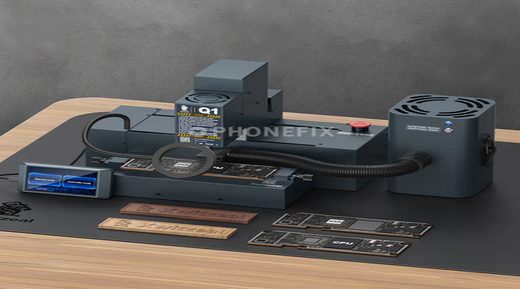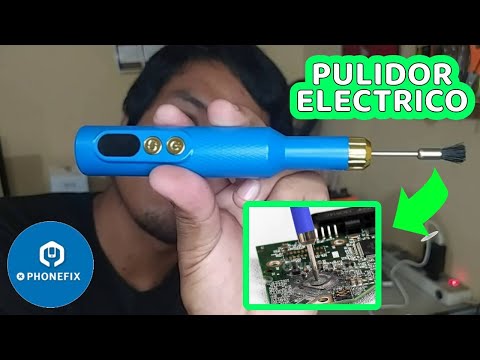Ball Grid Array (BGA) chips are critical components in modern electronic devices, including smartphones, laptops, and gaming consoles. They serve as the backbone for processing and data transfer. However, due to continuous use or external damage, these chips can develop faults, such as solder joint failure or physical damage, leading to device malfunction.
Common Causes and Impact of BGA Chip Failures
1. Solder Joint Aging and Failure
Over time, the solder joints connecting BGA chips to the iPhone motherboard may weaken due to thermal cycles, mechanical stress, or aging. This results in intermittent connections or total signal loss, causing devices to freeze, reboot, or stop functioning altogether.
2. Physical Damage to BGA Chips
Physical damage, such as scratches or dents on the chip surface, can disrupt the electrical pathways and compromise the chip’s performance. Such damage is often caused during repair attempts or accidental drops.
3. Secondary Damage During Repairs
Improper handling during manual repairs can cause further damage to BGA chips or the surrounding motherboard. Using inappropriate tools may result in uneven surfaces or irreparable damage, reducing the chances of successful restoration.
Impact:
Unresolved BGA chip failures can lead to:
Device malfunction or complete breakdown.
Expensive motherboard replacements.
Potential data loss, especially in cases involving storage chips like NAND Flash.
Why Accurate BGA Chip Grinding Matters
What Is BGA Chip Grinding?
BGA chip grinding is a precise technique that removes damaged solder layers or physical imperfections from the chip surface, creating a clean and even base for reballing or re-soldering.
The Importance of Precision in Grinding
1. Prevents Further Damage
Accurate grinding ensures that only the necessary material is removed without affecting the chip’s functionality or surrounding components.
2. Improves Soldering Quality
A smooth, even surface promotes better solder adhesion, ensuring stable electrical connections during reassembly.
3. Enhances Repair Success Rates
Proper grinding pen minimizes the need for repeated repairs, reducing costs and improving the device’s reliability post-repair.
The Role of Precision Tools: Why CNC Grinders Are Essential
High-quality tools like the Xwitzeal Q1 CNC Grinder have revolutionized BGA chip grinding with their precision and efficiency. Here’s why these tools are indispensable:
1. High-Precision Operation
With speeds up to 26,000 RPM and automated controls, CNC grinders ensure consistent, micrometer-level precision. This is critical for the small, delicate structures of BGA chips.
2. Efficient and Safe
CNC grinders like the Xwitzeal Q1 are equipped with vacuum systems that collect debris during the grinding process, ensuring a clean and safe work environment while preventing contamination of the motherboard.
3. Reducing Human Error
Manual grinding is prone to errors, but automated tools offer repeatable, standardized results, reducing the risk of irreparable damage.
4. Versatile Applications
Beyond BGA chips, these grinders can handle various tasks such as NAND Flash repair, CPU grinding, and even cutting or polishing phone frames and camera rings.
How Accurate Grinding Extends Device Life
1. Restores Functionality
Precise grinding removes damaged solder and surface imperfections, allowing for successful re-soldering and restoring device functionality.
2. Prolongs Hardware Lifespan
By addressing solder joint issues or surface damage early, grinding prevents further degradation, effectively extending the device’s useful life.
3. Saves Costs
Repairing a BGA chip through grinding is significantly cheaper than replacing the entire motherboard or purchasing a new device.
4. Enables Data Recovery
For storage chips like NAND Flash, accurate grinding can facilitate successful repairs, allowing technicians to recover critical data from damaged devices.
How to Choose the Right BGA Grinding Tool
1. Prioritize Precision and Automation
Opt for tools like the Xwitzeal Q1 CNC Grinder that offer high-speed, automated grinding with touch-screen control for fine adjustments.
2. Look for Safety Features
Tools with vacuum systems help maintain a clean workspace by collecting dust and debris generated during grinding.
3. Ensure Versatility
Choose a tool that supports multiple applications, from BGA chip grinding to polishing phone frames or camera rings.
4. Verify Build Quality
Invest in tools made from durable materials to ensure reliability and longevity under regular use.
How Accurate BGA Chip Grinding Can Extend the Life of Your Device












